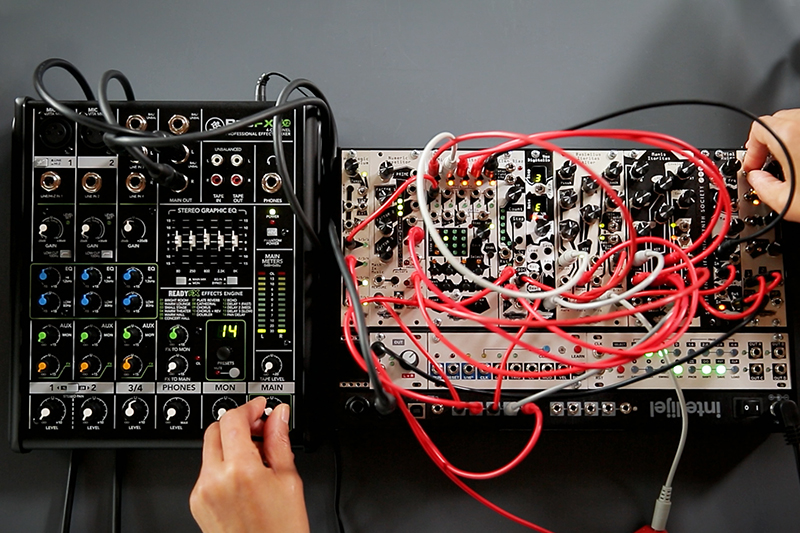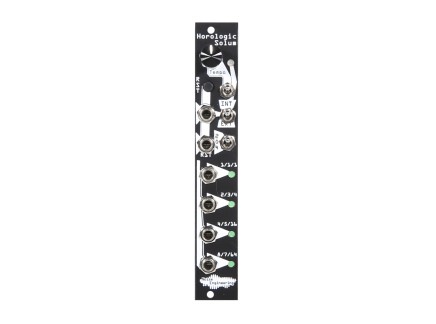Local electronic musician Trovarsi visited our shop to present a workshop on how to make techno with a Eurorack modular synth. Using only an Intellijel Palette case full of Noise Engineering modules, she manages to pull off a powerful full live performance, complete with hard-hitting kicks and overlapping peculiar timbres. Embracing noise and edgy timbres, this video should prove a treat for anyone interested in Eurorack dance music—or anyone interested in strategizing how to put together a small, but powerful Eurorack system.
Timing and Control in Trovarsi's Setup
Because every modular setup is unique, understanding how to get started making music is not always straightforward. It takes time and planning to work your way toward a setup that makes sense for you, and sometimes even simple musical tasks can seem complex. In an instrument that doesn't necessarily deal with conventional ideas of pitch and timing, making familiar types of music can be difficult. The combination of some basic strategies and a healthy dose of experimentation, though, can be all it takes to make everything fall into place.

In this demo, Trovarsi's setup is minimal but clever: it uses only a 62hp setup of Noise Engineering modules (with a little bit of effects from an external Mackie mixer). Everything starts with a clock source—in this case, a Horologic Solum, which provides steady clocks at multiple related speeds.
These clocks are then distributed throughout the system to a number of destinations: sequencer clock inputs, module trigger inputs, and modulation inputs. Because all rhythmic information (including pitch sequences and modulation) is driven from the same source, all sounds are rhythmically related to the same base tempo, and all sounds constantly move together.
Specific rhythms are derived from the Numeric Repetitor—a gate generator which takes incoming clocks and produces a huge variety of rhythms from standard to jagged and angular. Pitch sequencing and modulation are handled by the Mimetic Digitalis, Vox Digitalis, and Clep Diaz.
Sound in Trovarsi's Setup
The heart of the system's sound, though, are the Basimilus Iteritas Alter (BIA) and the Manis Iteritas (MI)—two full synth voices, each with a stunning range of sonic possibilities. While some might consider BIA to be strictly for drum sounds and MI for edgy synth sounds, these modules' flexibility exemplifies what is so great about both Noise Engineering in general, and about Trovarsi's personal workflow. Both the BIA and MI provide control voltage inputs for every parameter, meaning that they are great candidates for extensive modulation. That modulation can come from anywhere: LFOs, gate sequencers, random sources, etc. By modulating even just a couple of destinations on the BIA and MI simultaneously, their sounds can rapidly change into something entirely new.
Additionally, the BIA is run through a Viol Ruina. One of the newest additions to the Noise Engineering lineup, Viol Ruina is a combination filter and distortion with a unique bite. In this setup, it is used to add some extra grit and edge to the kicks and bassline.
In Trovarsi's example, intentional modulation of the BIA alone yields smashing kicks, jagged basslines, and alien hats and percussion sounds. Similar treatment of the Manis produces leads, noisy percussive hits, and edgy, grinding timbres. By tying it all together with a Xerest Pola mixer (with integrated performance mutes), Trovarsi turns what appears to be a modest collection of modules into a full-fledged groovebox.
Work like this proves that you don't need an enormous system to create amazing music, and that seeming limitations are sometimes one of the best ways to establish a truly creative and unique approach to music making.








